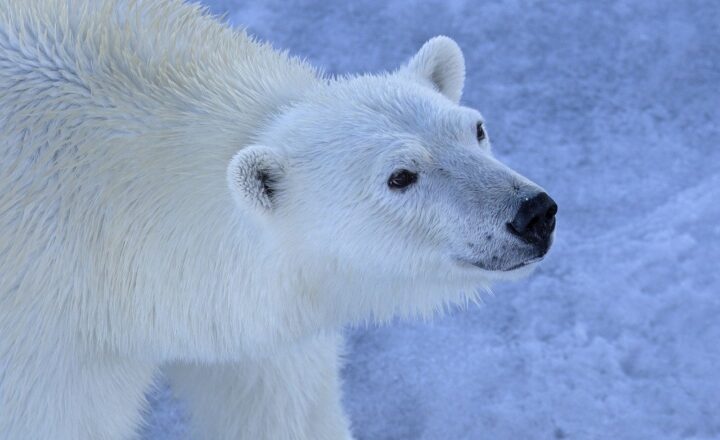Why Antarctica Is the Coldest Place on Earth
November 16, 2024

Antarctica, the fifth-largest continent, is often associated with extreme cold, ice, and intense winds. But what really makes this remote land mass the coldest place on Earth? To uncover this fascinating phenomena, it’s essential to understand various environmental, geographical, and meteorological factors that culminate in the Antarctic’s fierce chill.
1. Overview of Antarctica: The Frozen Continent
Antarctica is predominantly covered by thick ice sheets that are, on average, about 1.6 kilometers (1 mile) thick, which makes the continent an isolated and extremely cold space. The vast ice reserves and the enormity of the continent contribute to its ability to retain cold temperatures throughout the year. Also, the geographical position of Antarctica at the South Pole plays a crucial role in its climatic conditions.
Antarctica is home to the following unique characteristics:
- Isolation: Being situated at the southernmost point of the earth, Antarctica is surrounded by ocean, significantly minimizing the influence from warmer air masses.
- Elevation: The average elevation of Antarctica is around 2,300 meters (7,500 feet), which is much higher than most landmasses, allowing for lower temperatures due to the decrease in atmospheric pressure.
- Continuous Darkness in Winter: During the winter months, parts of Antarctica experience polar night, where the sun doesn’t rise for an extended period. This continuous darkness contributes to a significant drop in temperatures.
Understanding how a combination of these factors creates such a cold environment is key in grasping why Antarctica stands out as the coldest place on Earth.
2. Meteorological Factors Contributing to Extreme Cold
Several meteorological conditions play a pivotal role in shaping Antarctica’s temperature patterns:
- Polar Vortex: Antarctica is situated in a region known to experience a strong polar vortex – a large area of low pressure and cold air surrounding the Earth’s poles. This polar vortex keeps temperatures low and is particularly pronounced during winter months, with cold air being confined to the Antarctic region.
- Low Humidity and Precipitation: Antarctica is classified as a desert due to its remarkably low precipitation levels. With less moisture in the air, the heat retention capabilities of the atmosphere are diminished, contributing to cooler temperatures. Lack of humidity also diminishes cloud formation, leading to clear skies that allow for heat to escape into space during the night.
- Wind Patterns: The prevailing winds in Antarctica, known as katabatic winds, can exacerbate cold conditions. These winds are formed when cooler air sinks down from the high interior of the continent towards the coast, and as it descends, it warms up. However, they can still cause very cold wind chill factors by transporting frigid air across the land.
These meteorological aspects create a cycle of persistent cold, making it nearly impossible for warmer temperatures to seep in.
3. Historical Temperature Records in Antarctica
Antarctica is not only known for its cold but also for officially holding the record for the lowest temperature ever recorded on the Earth’s surface. On July 21, 1983, temperatures plummeted to -128.6°F (-89.2°C) at the Vostok Station in East Antarctica.
In addition to this record, research conducted by NASA in 2010 found that a cold pocket on the East Antarctic Plateau dipped as low as -135.8°F (-93.2°C). This consistent tracking of extreme cold has further cemented Antarctica’s reputation as the coldest place on Earth.
As research continues, scientists are constantly uncovering new extreme cold pockets within the continent, emphasizing that Antarctica is uniquely suited to produce unprecedented low temperatures.
4. The Impact of Climate Change on Antarctic Temperatures
While Antarctica is extremely cold, climate change poses a noteworthy challenge to its temperature dynamics. Despite the cold record, the continent has also been experiencing warmer temperatures in various regions due to global warming. The warmer air and shifts in weather patterns have led to some melting of the ice sheets, raising concerns about sea-level rise and environmental impact.
However, in the midst of warming trends, the interior of Antarctica remains extraordinarily cold due to elevation and isolation. The struggle between rising temperatures surrounding the continent and the intrinsic cold of Antarctica makes it vital for ongoing research.
5. Conclusion: Antarctica’s Cold Legacy
Antarctica’s reputation as the coldest place on Earth is not just due to its geographical location, but an intricate interplay of its icy landscape, elevation, and unique meteorological phenomena. The continuous records of extreme temperatures solidify its position in scientific history and cultural context. As climate change continues to unfold, the continent serves as a critical benchmark for understanding broader climatic shifts across the globe.
Exploring the reasons behind Antarctica’s extreme cold fosters an appreciation for our planet’s natural wonders and highlights the importance of understanding and preserving such unique ecosystems.
As we continue to study this frozen continent, we gain insight not just into Antarctica but into the future of Earth’s climate.
As explorers and scientists unveil more about this mysterious land, we ourselves must remain vigilant stewards of our environment, learning from the past to protect our future.








